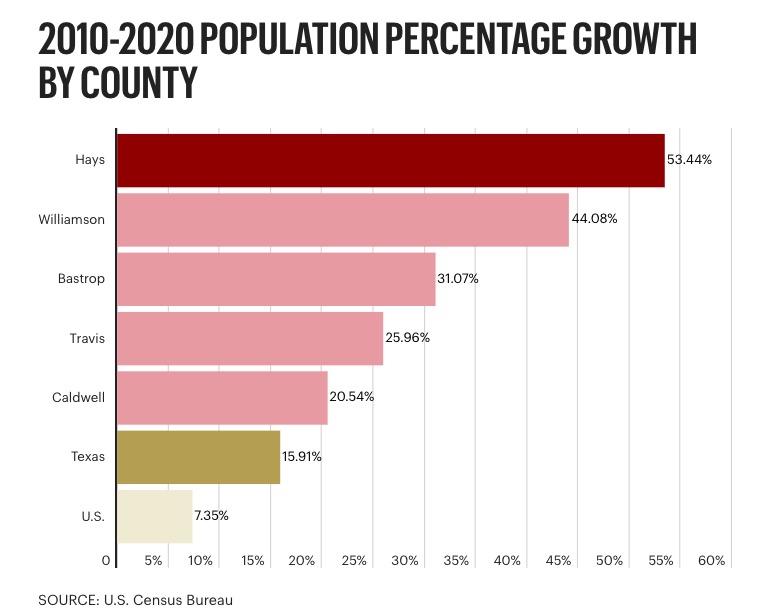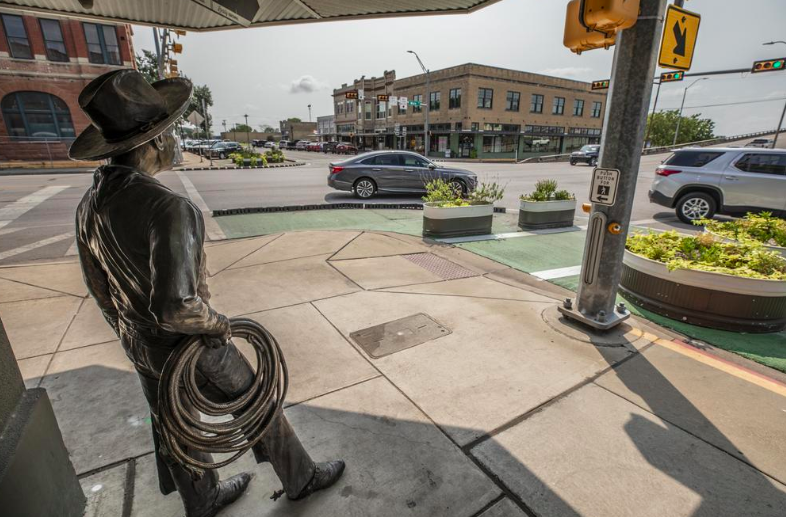Over the last couple years, companies locating in the Austin-area are finding friendly homes in the outskirts of the five-county metro. New research is showing that those decisions are shifting much of the area’s economy to the north.
The Texas Real Estate Research Center at Texas A&M University recently published a study that looked at employment and commuter trends, finding that for the first time, the majority of people in Williamson County – just north of Austin and Travis County – are staying within the county for work.
All five counties in the Austin metro – Travis, Williamson, Hays, Bastrop and Caldwell – have seen growth in population, employed residents and employment since 1990. But Williamson has seen the fastest rate increase, growing from 16% of the area’s workforce in 1990 to 24 percent from 2011-2015. Meanwhile, the number of Travis County residents who work within Travis County dropped from 97% to 92%.
“The central city of Austin and its surrounding areas continue to grow, with growth largely concentrated to the north toward Williamson County. This means more urban-style development and jobs for Williamson County, which means many of its cities are no longer strictly bedroom communities of Austin-Round Rock,” Adam Perdue, an economist at the Research Center, wrote in the study.

While the study provides a hard look at the shifting power in the Austin economy, it’s unsurprising considering the recent spate of news about company relocations and expansions. Cheaper land, more available space and the propensity of local governments to give out incentives compared to the city of Austin and Travis County have pushed the area’s larger projects to the outskirts of town. That’s been followed by massive housing subdivisions and mixed-use projects.
In terms of Williamson County, which saw its population grow from 422,679 in 2010 to 643,026 in 2021, according to the U.S. Census Bureau, they have secured one of the largest projects in the world: The $17 billion Samsung Electronics Co. Ltd. next-generation semiconductor manufacturing facility in Taylor. A number of the company’s suppliers have already pledged to create jobs in the county, including Linde PLC in Taylor and Valex Corp. in Round Rock. Applied Materials Inc. might also expand in Hutto, while Toppan Photomasks Inc. might expand in Round Rock.

The other adjacent counties have not been left out of the boom. Hays County is among the fastest-growing counties in the country, and is strategically located along the I-35 corridor between San Antonio and Austin. A number of projects have been pledged in communities there, including the $267 million Hill Country Studios project recently proposed in San Marcos. Nearby Caldwell County is also rumored to be a potential landing spot for a chipmaking facility from Micron Technologies Inc.
To the east, Elon Musk’s companies are looking at Bastrop County, which is nearby the billion-dollar Tesla Inc. factory. Musk’s tunneling startup, Boring Co., and his space company, Space Exploration Technology Corp., have been eyeing Bastrop County. Plus Tesla suppliers have set up all throughout the metro, from Williamson County all the way down to Hays County.
“The developed fringe of the central Austin region has only recently expanded beyond the Hays County line along the southern corridor of I-35. It has yet to reach Bastrop or Caldwell Counties, so residents there are likely still focusing on independent local job opportunities and commuting into Travis County,” Perdue wrote. “As the Austin-Round Rock MSA region continues to grow, so should population and employment opportunities in the counties that make up the region. The ties between the counties should strengthen as well.”
The Article is from Austin Business Journal, copyright belongs to owner





